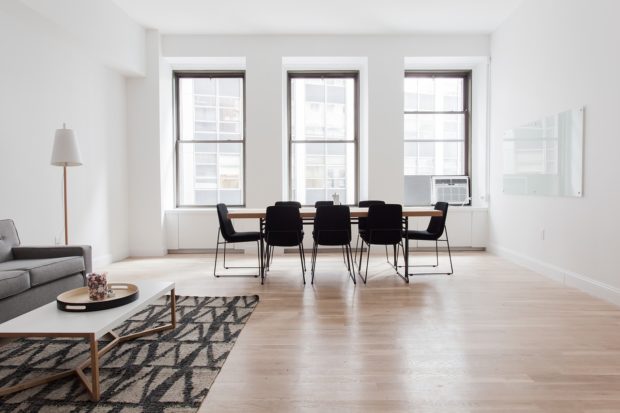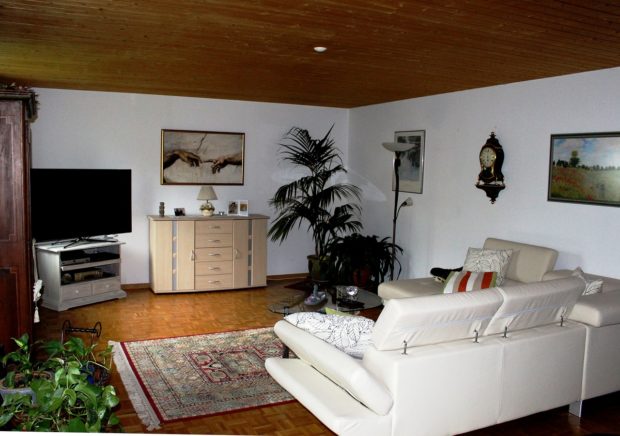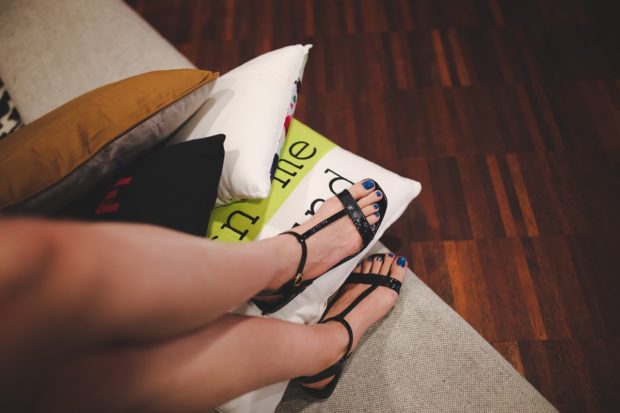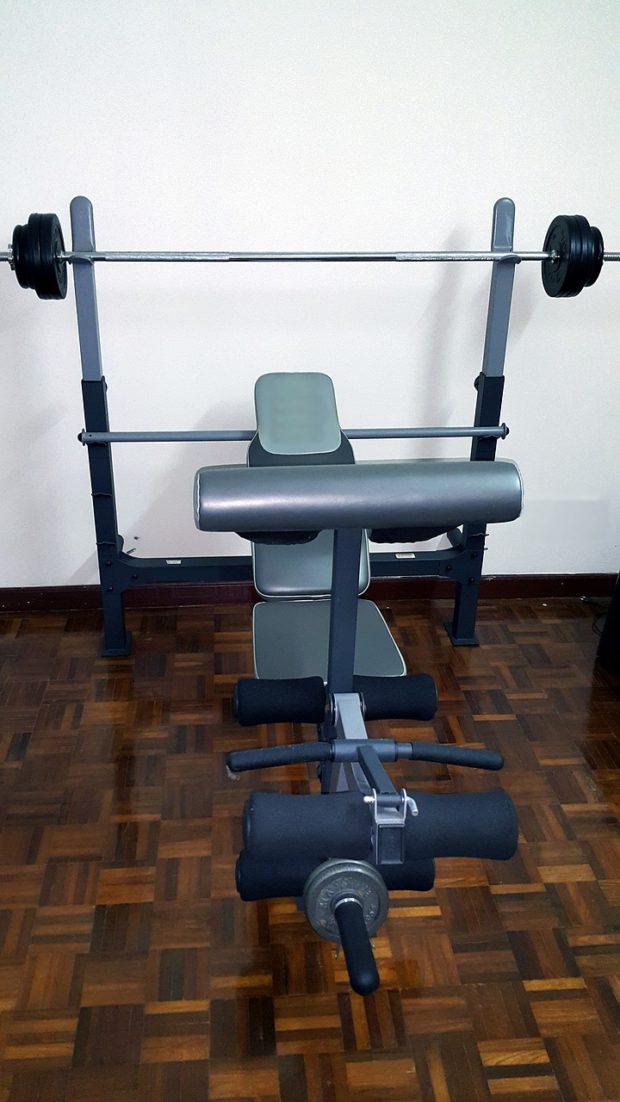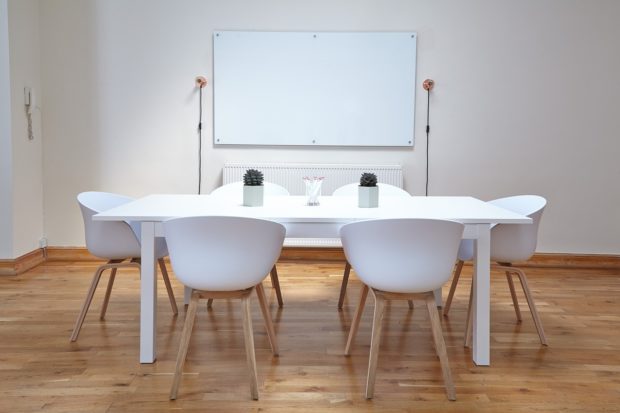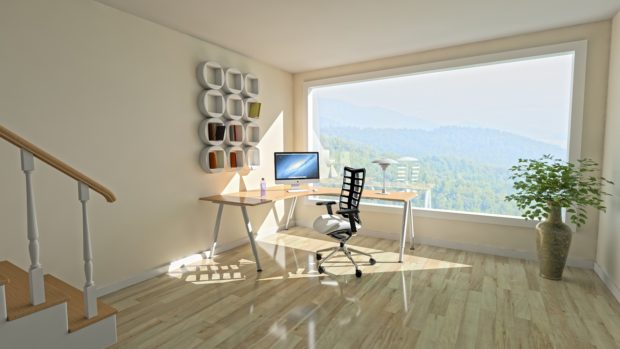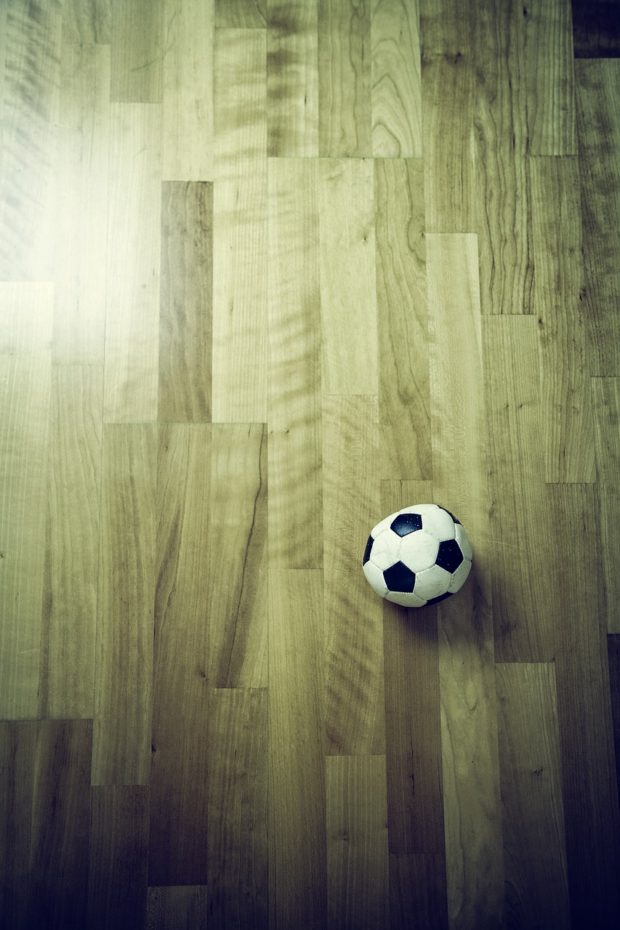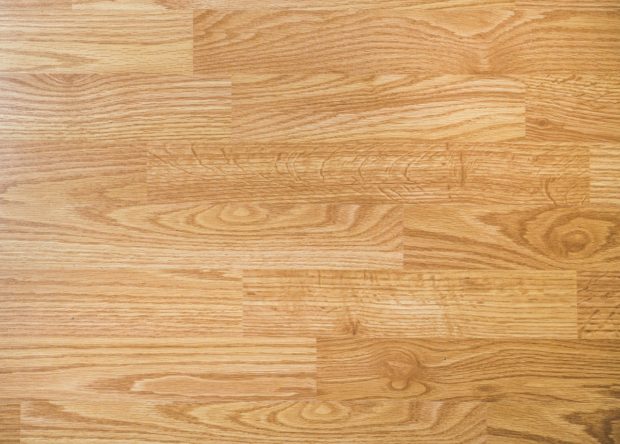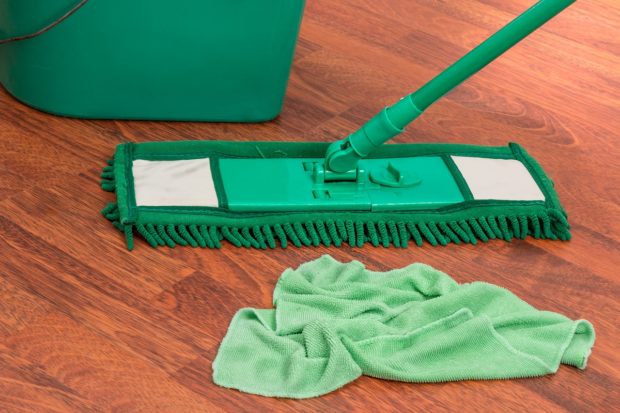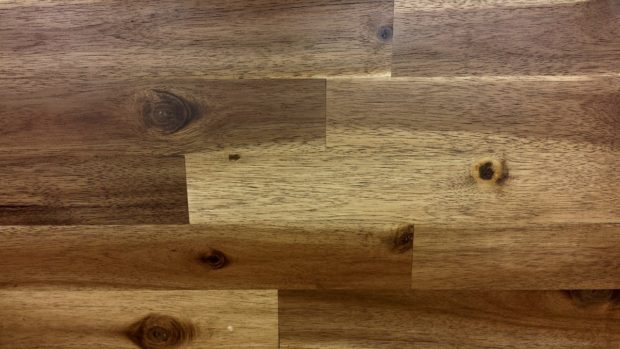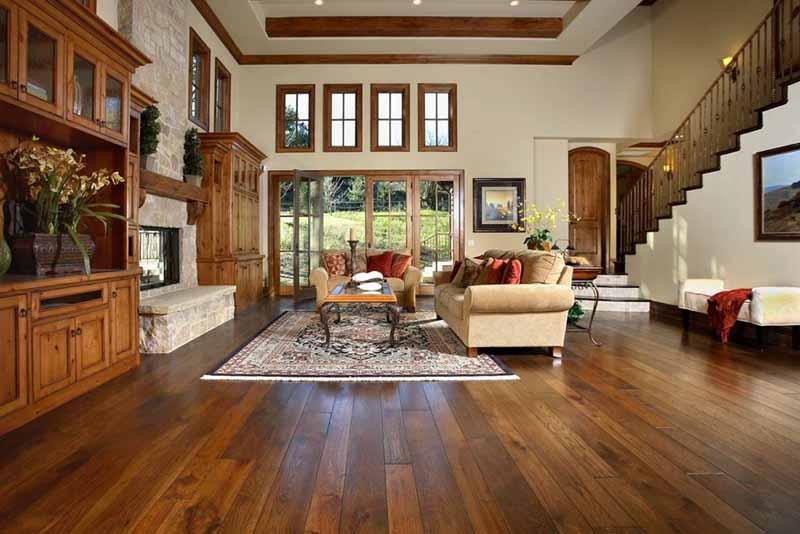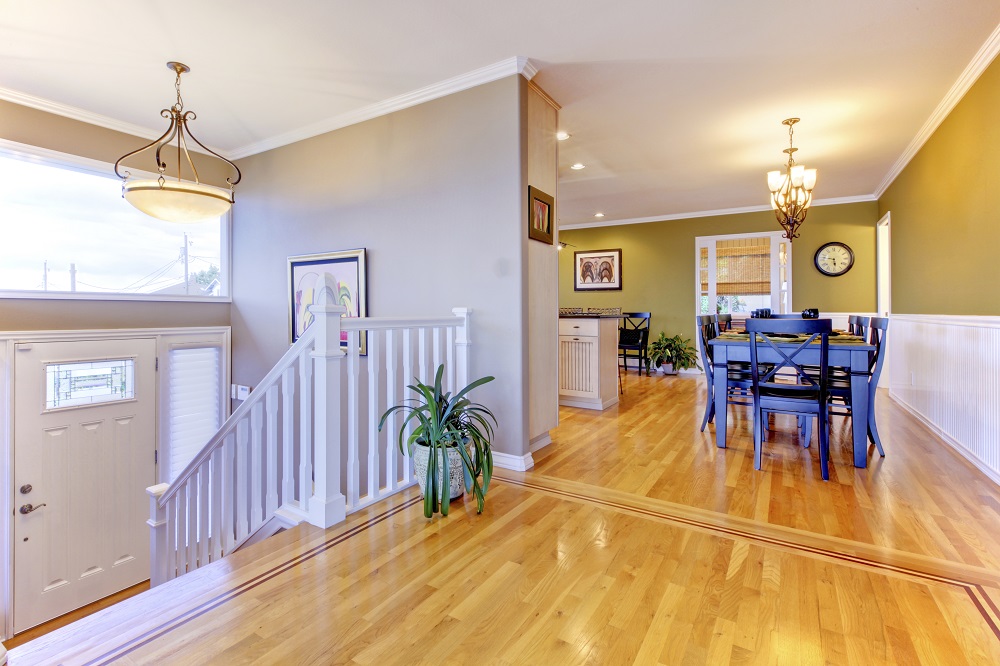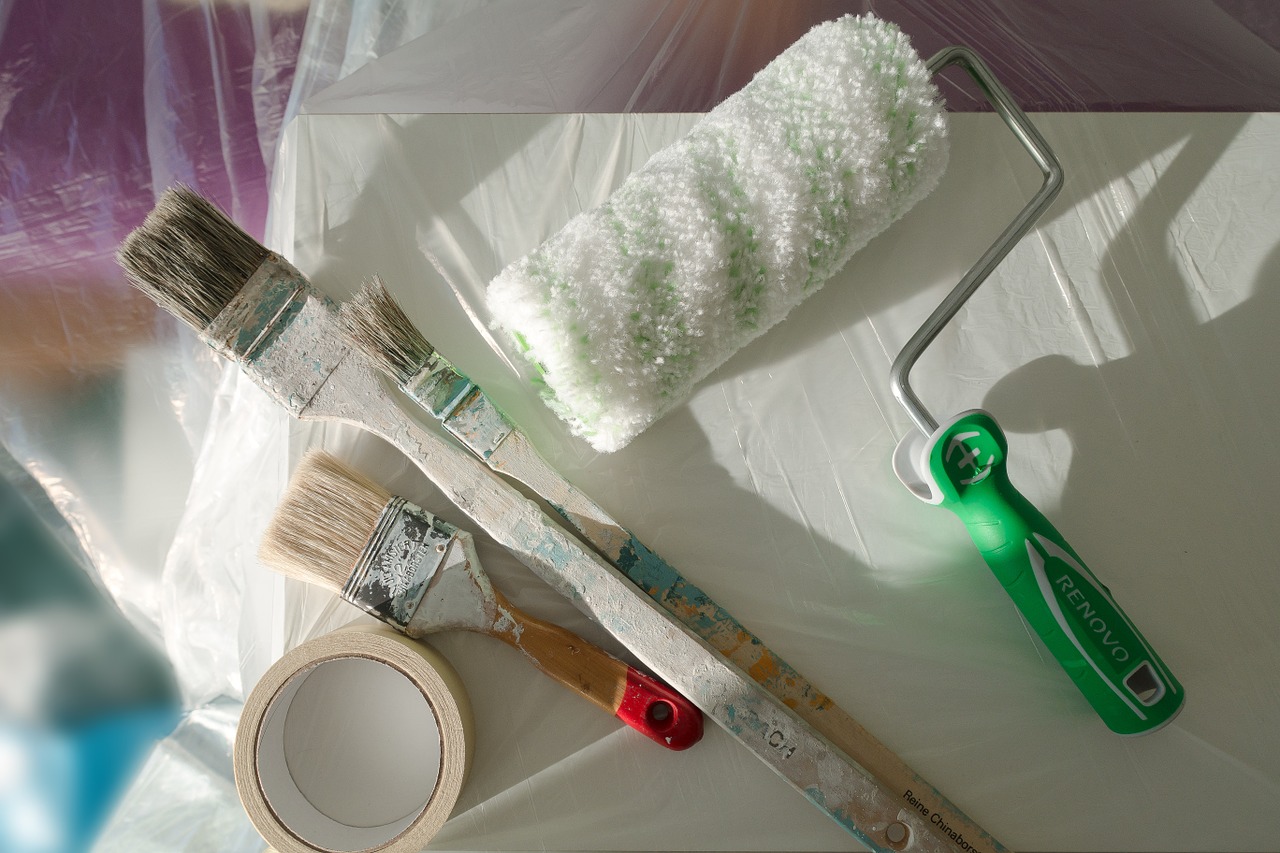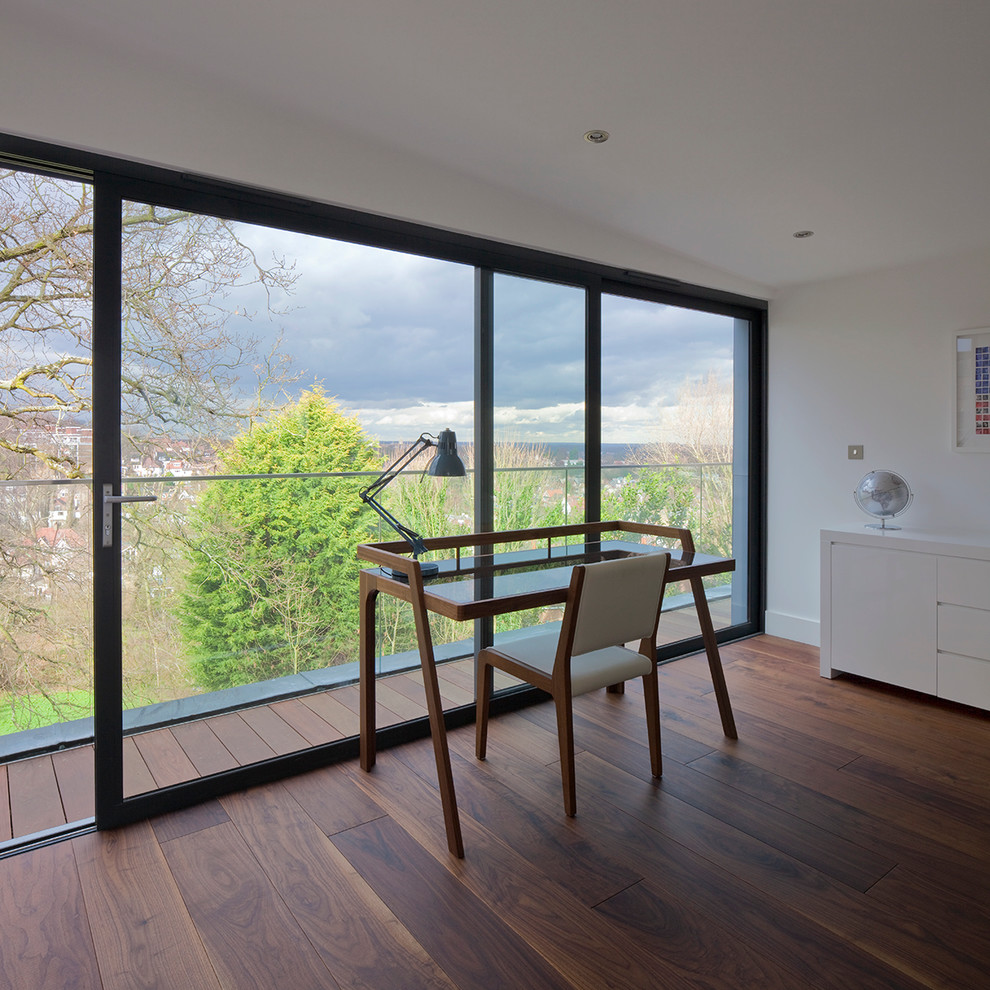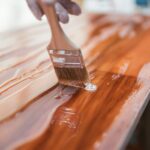Elaborate flooring, dramatic designs and unique shapes and sizes. They all describe the famous parquet flooring. They add character and depth to a house’s interior giving it a classy look.
To construct this floor, you must fit small hardwood pieces together in certain geometric patterns which may differ depending on your taste and style.
Parquet flooring took over the housing scene in the United States around the 1960s. However, similar to a booming fashion style at a certain stage in life, the trend faded away and demand almost diminished.
Nevertheless, this flooring type is crafting a comeback courtesy of improved manufacturing methods, which offer customers with a wider wood species. You may have seen this flooring in several houses, but do you know its origins? Its pros and cons, installation, maintenance and its price.
In this article, we’ll dive deeper than this. To start off, why don’t we find out where it all started.
1. Parquet Flooring: The History
From its name, you may have already guessed its origins. If you thought French, you’re correct. The term derives its name from a French term called “parquetry” which means “a small compartment”, and it goes as far back as the 17th century.
Back then, artisans would cut out small pieces of wood of certain geometric shapes and create elaborate designs. Afterward, they’d fit each piece on the floor to another using glue to create a magnificent floor. However, this job is tiring since it requires great skill and patience to achieve a quality finish. Therefore, parquet flooring was reserved for the wealthy in society and public buildings.
You can also take time off the next time you’re in Paris to visit some remaining works of art at the Galerie d’Hercule situated at the Hotel Lambert.
2. The Best Wood to Use in Parquet Flooring
Artisans use various wood types to create this flooring. All with their individual pros and cons including price, natural color, availability, durability and availability. They include chestnut, walnut, ash and oak.
The latter, however, beats the rest. Oak, is durable and you can stain with a host of colors thanks to its natural light color which allows it to tone with ease. It’s like painting on a white paper.
3. Solid Wood vs Engineered Parquet: The Differences
Solid wood is natural wood; therefore, it’ll contract and expand with temperature and humidity fluctuations. This explains the cracks and creaks you may hear when you turn on the heater. On the other hand, engineered parquet is a combination of core and hardwood. This core comprises up to 12 layers of plywood also known as wear layers. Depending on the flooring thickness, the core and wear layer are bonded together to make up a 2 to 6-millimeter thick material.
With solid wood, you get character and warmth and just like fine wine, it gets better as it ages. On the other hand, engineered parquet is less prone to temperature and moisture fluctuations. In addition, you can install this floor type over underfloor heating which is different from solid wood. You can also get different dimensions with easier installation methods compared to solid wood.
However, when it comes to durability, solid wood wins hands down. You can sand it several times, at least once in 10 to 15 years while one sanding is enough to wipe off the pre-finish on engineered floors.
4. Different Parquet Designs
You have a wide range of styles and designs to choose from. For example, Monticello, Bordeaux, diagonal basketweave, basketweave, brick pattern and Versailles.
However, two patterns seem to capture many consumers:
- Herringbone: These are rectangular tiles placed at right angles to each other. They come in various forms such as the double, square and single herringbone.
- Chevron: Their shapes resemble a parallelogram and are placed to form V shapes.
While both patterns achieve zigzag effects, certain glaring differences exist. Herringbone is classier while Chevron has a modern touch which creates an optical illusion because of the installation angle which reflects light, thus changing its look depending on your viewpoint.
In addition, the Chevron style requires deep pockets to buy and install. This is because of the block’s shape and the skill required to fit them.
5. Buying and Installation Prices
Installers can lay out several parquet floor types although a huge percentage is in form of square tiles. These types contain hardwood strips glued to a thin plywood or a mesh.
However, custom designs still exist in residential homes, but on rare occasions because customization means cutting wood pieces according to a preferred geometrical pattern. Afterward, the assembly begins, which involves piecing them together as you would in a puzzle game.
For this extra work, installation companies which deal in custom designs will charge anything from $20 to as much as $45 per square foot. It could be more, but this will depend on the complexity.
The tiles come in different sizes and sold in cartons. The sizes are 18-inch, 12-inch and 9-inch squares. Their installation will cost between $3 and $5 per square foot while professionals will charge between $7 and $10 per square foot.
6. Installation Tips
Since parquet flooring is making a comeback in the construction industry, numerous contractors have the knowledge and expertise to install parquet tiles.
Nevertheless, if you’re a handy person, you can opt to install the tiles yourself, besides, they always come with installation instructions from the manufacturer.
You can also call the professionals if you feel it’s overwhelming.
- Prepare for Installation: Parquet tiles require a stable substrate for perfect installation. In addition, you must ensure the surface is level and dry. Also, get rid of baseboards before installation.
- Acclimatization is important: Since parquet is natural wood, it’s susceptible to weather changes. Therefore, you must give it time to “familiarize” itself with the new environment. Often, this period anything from two weeks onward. By acclimatizing, you’ll avoid developing gaps between the tiles after installation. You can store the cartons in an unused room without unpacking the tiles.
- Make sure the layout is perfect: Parquet tiles are delicate and inch perfect. Therefore, all rows must align with the walls and should be straight with no error. If this isn’t the case, you risk ending up with an amateur finish. Some rooms may not be square. For this reason, you must keep this in mind when creating the layouts. If you’re unsure how to go about creating a layout, you can follow the instructions which came with the tiles. If you can’t, call the professionals and let them handle it.
- Use recommended tools and materials: These materials and tools have specific purposes which work together to achieve a professional finish. Therefore, don’t get to work with substitute tools and materials.
- Use a jigsaw instead of a circular saw: Most wood floors require circular saws to cut through. However, with parquet flooring, things are different. You see, the tiles come with wires inside the wood strips. If you use a circular saw, you risk destroying it because the wires might end up tangled in the spinning blade. What’s more, you’ll ruin the tile. In contrast, a jigsaw’s up and down movement will cut through both the wire and the wood without difficulties.
- Finished and Unfinished Floors
Parquet floors come either finished or unfinished. In the former, a protective layer and stain are applied on the floors while in the latter, you can finish using situ. With unfinished flooring, you have the freedom to customize the floor to your preferences.
However, industry finished floors are more durable and faster to install since you don’t require drying time.
On pricing, the type of finishing will determine how much you’ll pay. Unfinished parquets are inexpensive, but they need sanding, staining and sealing which are all added costs. On the other hand, pre-finished boards only require laying and fastening. Therefore, the materials are the only cost.
The Pros and Cons
We’ve looked at parquet’s origin, the various designs and styles, installation tips not forgetting its price. At this point, it’s important to look at the advantages and disadvantages before digging into your pocket and spending time on this flooring.
Advantages
- Parquet has numerous designs including complicated patterns.
- The wood appeals to the eyes creating a warm feeling in the house.
- Installation is easy if you are a handy person. All you have to do is follow the instructions included in the carton from the manufacturer.
Disadvantages
- It’s difficult to refinish
- You cannot install it below ground level because of moisture issues which will affect its shape and size.
- Also, high humidity areas such as laundry and bathrooms aren’t suitable installation areas, but you can install engineered parquet with a lacquered finish which will seal the floor to prevent water penetration.
8. How to Treat Parquet Floors
Solid wood and engineered parquet use various treatments to give them various appearances. For example, you can distress the wood by poking worm holes or add repair patches. This will give the wood an aged look.
Another way is by purchasing reclaimed parquet blocks. However, it’ll cost more to install than new ones since they need individual cleaning and sorting to find matching depths.
Furthermore, you may need to sand the entire floor and filling to close the gaps introduced by irregularities, but this will depend on the blocks’ condition. As a result, the whole flooring project may cost more because of wastage.
Tumbling blocks is another technique used to age parquet. This gives them a rustic look due to the dents and scratches. Another way to achieve this is by darkening the wood. You can do this by heat-treating which produces fumes and in turn darkens the wood.
Staining is also a fantastic way to age parquet. From dark to light oaks, yellowish, reddish and orangish colors. The color you’ll choose will depend on your personality and your home’s interior design.
You can also use oil for oil parquets at least once every three years. This will restore the original shine while also giving it a natural finish.
9. How to Maintain Parquet Floors
Parquet is an expensive investment which needs proper care and maintenance in order to last longer.
- Use wool or microfiber to dry mop and dust the floor. This you’ll do daily.
- As soon as a liquid spills on the floor, wipe them with absorbent paper towels. For sticky stains, wipe using a sponge or a damp cloth.
- You can vacuum the floor at least once each week but use a brush attachment.
- Instead of regular soap, use specific cleaning products specific to wood floors to clean the floor every month.
- Avoid using floor wax or other polishing products intended for ceramic tile and vinyl floors. They might destroy the finish.
- Place rugs under moving furniture such as chairs to avoid scratches. You can also use felt protectors or stick-on silicone on furniture legs.
- To avoid slippery conditions, avoid using dusting products.
10. Parquet Floor Refinishing
Proper care and maintenance will retain the floor’s gleaming look for no less than 10 years. However, as time goes by, even with proper maintenance, the floor will lose its shine, especially in areas where there’s high traffic.
This is when you need to schedule a refinishing with wood flooring professionals. The task is tedious and long because they’ll have to sand out the old finish. Also, the sanding takes place in the same direction as the grain to avoid cross-grain markings.
Now you know all about parquet flooring. From its origins, its designs and styles, advantages and disadvantages not forgetting how to treat and maintain the floor.
Flooring is an intricate affair, especially with parquets. This is why you must call professional floor installers to fit the tiles and avoid an amateur finish. Also, don’t forget to treat and maintain your floor as well as refinishing once you cross the 10 to 15-year mark.
However, since floors speak volumes about your personality and style you can install this floor, which can express this with ease thanks to its depth and customizability.

